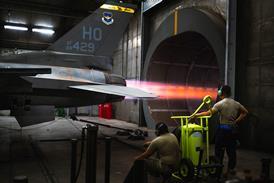Bell expects to receive Canadian and US airworthiness certification for its new 427 helicopter in July after completing modifications to the 407's similarly designed tail rotor in a move designed to prevent any further tail boom blade strikes.
Certification of the eight-seat 427 has been delayed progressively since the start of the year, partly because of three non-fatal accidents involving the smaller, single-engined, 407 in Brazil, South Africa and the USA.
An extensive investigation and debris analysis revealed that the helicopters crashed after the tail boom was severed by the tail blade.
All three accidents occurred after an abrupt left rudder pedal input, increasing pitch and causing the tail rotor to flap inward and strike the boom. The problem has been solved by moving the tail rotor outboard by 2.5cm (1in) and installing an interim mechanical stop against the pedal to reduce blade pitch. The 407 has been cleared for a restricted never exceed speed (VNE) of 130kt (240km/h).
Bell hopes to increase this to the 407's design VNE of 140kt by August by installing an airspeed-regulated pedal stop which opens and closes according to the helicopter's speed.
"The system is the same as we have put on the 427," says Troy Gaffey, Bell research and engineering senior vice-president.
Testing of the new components has been completed and the 350 407s in service will be modified.
Source: Flight International























